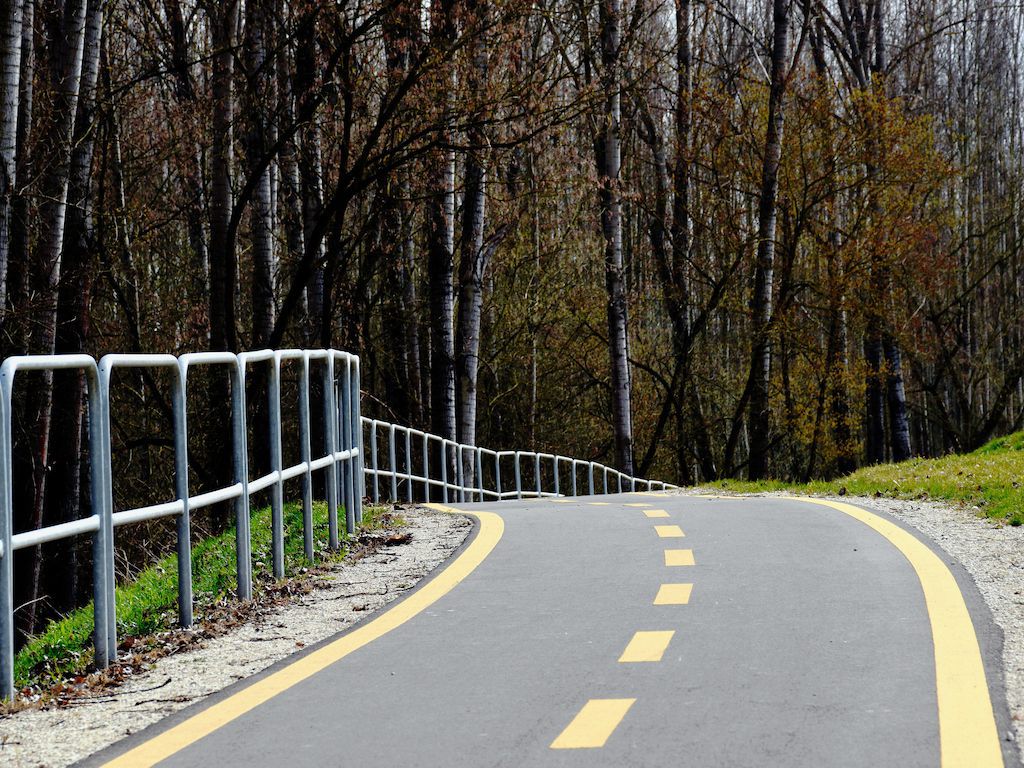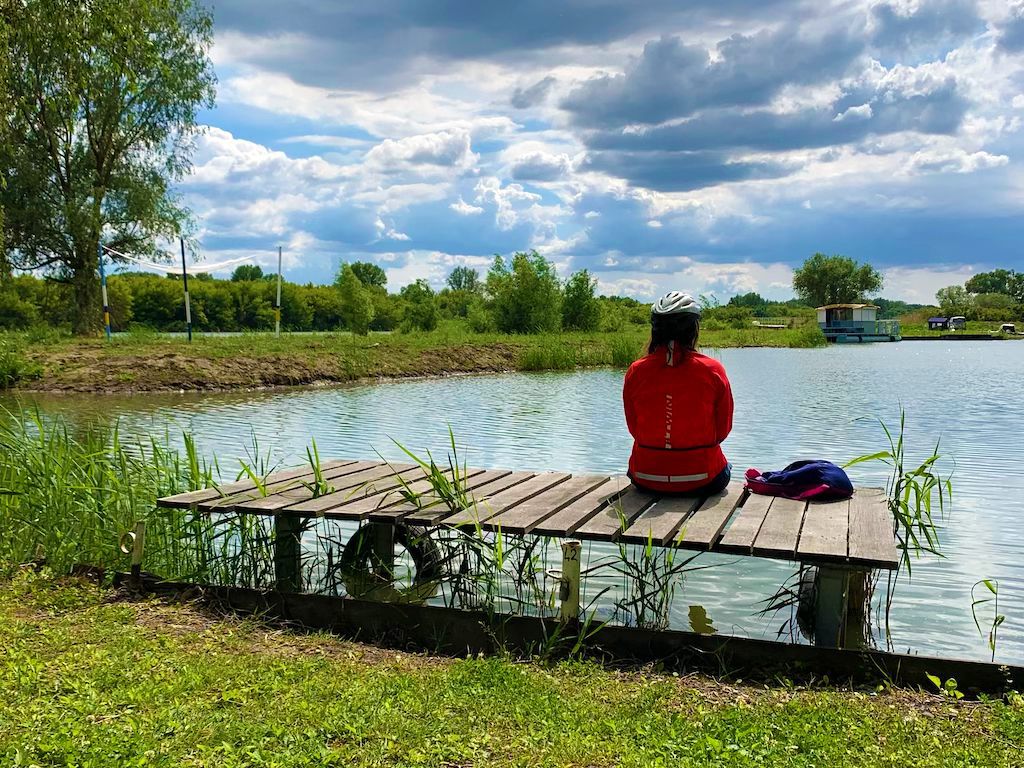 by Peter Illés on March 12th, 2023
by Peter Illés on March 12th, 2023
Although bike touring in Hungary is definitely more prevalent than in Romania, there are other destinations that spring to mind when planning a holiday.
That, however, is slowly changing. The last couple of years were marked by significant biking infrastructure developments, such as the Budapest - Balaton bike path and the completion of the Lake Tisza circuit by building a grand cycling bridge, which boosted bicycle tourism. But the event that finally put Hungary on the international cycling map was the Grande Partenza of the Giro d'Italia in 2022.
But what can you expect if you decide to visit Hungary by bike?
Perhaps unexpectedly so, Hungary has a well-established cycling culture. Based on a survey by Eurobarometer, Hungary is in the top 3 European nations that use their bikes the most, outdone only by Denmark and the Netherlands. 22% of respondents said that the bicycle is their most often used mode of transport. That may sound surprising, but if you think about it, the Great Hungarian Plains are plain... and flat. And also poor. A bike is a cost-effective way of getting around for many rural Hungarians.
I couldn't find any stats regarding cycling sports. However, I'd wager that we're not even in the top 10 European countries. That being said, the popularity of cycling as a sport is definitely on the up, with some bike paths practically swarming with cyclists during a sunny weekend.
The cycling infrastructure in Hungary is genuinely good, but with still plenty of room for improvement. There are bike paths near all the major travel destinations, including the 4 big lakes (Balaton, Tisza, Fertő and Velence).
The cycling network could be improved, mainly by connecting existing paths and circuits. The most glaring absence in infrastructure is along the Danube. Except for a couple of unconnected stretches between the Austrian border and Budapest, this central corridor remains undeveloped, which is also part of Eurovelo 6 and 13. There are no sections south of the capital that are worth mentioning.

You can find some pretty sweet bike paths in Hungary.
If your destination is unreachable on bike paths, you can always opt for public roads. However, finding out which roads are quieter can be challenging. Here's a quick overview of different road types in Hungary:
Being a relatively flat country means a lot of agricultural lands with tractor roads. These roads often provide an alternative to public roads. Sometimes these dirt roads are quite smooth; other times, the tractor treads make them quite bumpy. Believe me, my buttocks could tell some stories.
And now for some hot tips. Most large rivers in Hungary, like the Danube or Tisza, have well-maintained dams with dirt roads. You can ride these roads and enjoy the slow-flowing rivers while avoiding traffic.
Hot tip #2. Most mountains (well, large hills) in Hungary are crossed by several tarmacked forest roads. Usually, these roads are closed down by barriers and only used by forest rangers. I've ridden these roads in the Pilis, Börzsöny, Bükk or Vértes, and they have always been a blast. Except when they look like they just went through a blast. Road surfaces aren't always maintained, so watch for potholes, especially when riding downhill.
As always, Komoot is my recommendation for an app that you can use to plan your trip and discover these hidden roads.
A quick note on trains. One of the things I love about Hungary is that you can almost always take your bike on a train (exceptions being long-distance, intercity trains). If you see white and blue or red and white Stadler trains, you can take your bike on them.
Classic trains with multiple coaches can sometimes also carry bikes if they have a separate bike coach or bike compartment. Such trains going to Lake Balaton can almost always take bikes. However, they can get pretty crowded in the summertime.
Download the MÁV Start app. It has a pretty clumsy UX but will give you the best ticket options for you and your bike.
In general, motorists are used to cyclists and know how to behave on the roads. However, the busier the roads, the more impatient the drivers become. So take care, especially around larger towns.
There's good news on the animal front as well. Unlike in [Romania]((https://wiredonkeytours.com/posts/cycling-in-romania-all-you-need-to-know), you don't need to worry about stray dogs or wild animals either.
Hungary is an excellent destination if you're into bikepacking. Wherever you go, there are plenty of camping sites to choose from.
Wild camping in Hungary is theoretically legal for periods less than 24 hours. I'm saying theoretically because although it is legal, there are many exceptions, which in proper Hungarian bureaucratic form is almost impossible to untangle. You can camp in the forest but can't keep an open fire (duh). You can't camp in nature parks or areas of increased protection. You can sometimes camp in areas of regular protection. Other times you can't. You also can't camp near caves, springs, or marshlands.
As always, I recommend being sensible about camping in the wild. Keep out of sight, don't leave an open fire going and clean up after yourself.
Did I already mention Hungary is primarily flat? Well, it is. Unless you go near the mountains, you shouldn't expect long climbs. Short and steep rises, though, can catch you by surprise, so you better learn where your small ring is.
If you're looking for longer climbs, your best bet is the Mátra or Bükk. The classic for local climbers is a circuit in the Mátra, which includes the Kékestető, Hungary's highest point and the Gallya-tető.
The Pilis and Börzsöny, just north of the capital city, are favourites amongst the Budapesterners.

Hungary might be flat, but it has some great scenery and a lot of near water routes.
The country has a well-developed network of cycling trails that cater to riders of all levels, from casual cyclists to experienced roadies.
The Budapest-Balaton bike path, or BuBa, is a relatively new addition to Hungary's cycling map. It will take you through beautiful vineyards, along Lake Velence, through the old coronation city of Székesfehérvár, and arriving at the shores of Lake Balaton.
Riding around Lake Balaton is a must for everyone. Expect a dose of stunning landscapes, history and culture. Stop for a glass of fine wine whenever you're tired, or re-energize yourself with a bowl of chicken paprikash.
Hungary is also an affordable destination for cyclists, with many accommodation options, from budget hostels to luxury hotels and plenty of bike rental opportunities. The country's mild climate makes it an ideal destination for year-round cycling. However, I recommend the periods from March to the end of June and September to November, respectively.
With its lovely scenery, rich culture, and affordable prices, Hungary is a hidden gem for cyclists seeking a unique and unforgettable adventure.